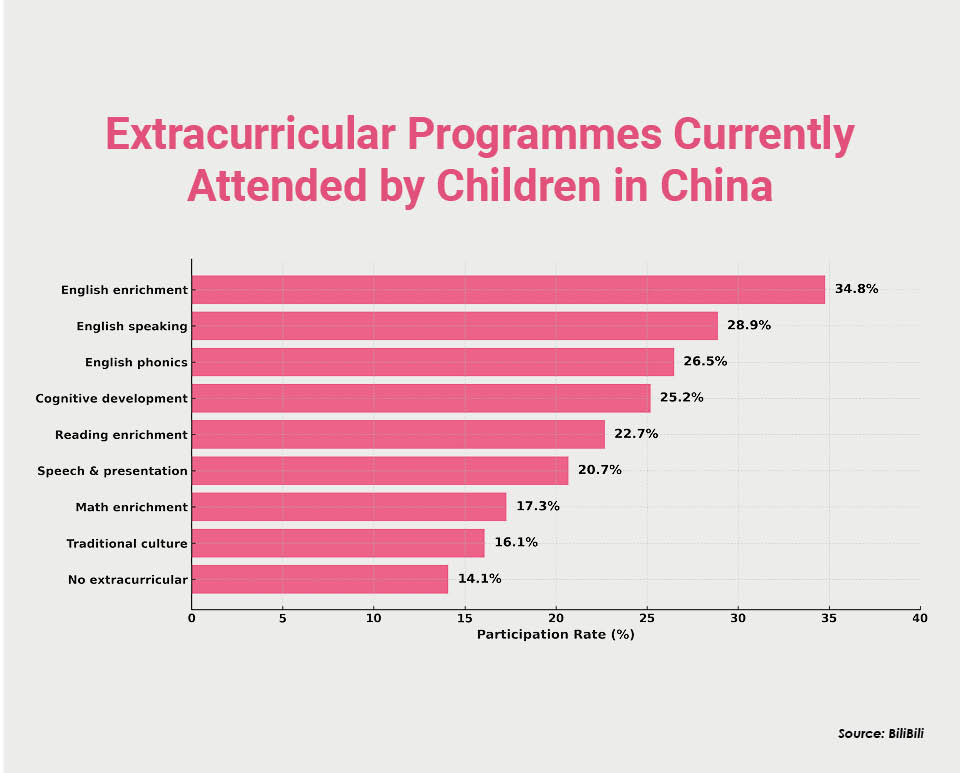
Animation has become the top choice for family entertainment in China, with elevated status now being given to English-language animation as a learning tool, according to a new study released by streaming platform BiliBili.
This shift has its roots in Gen Z (born between the late 1990s and early 2010s), which is quickly becoming the core parenting group and is reshaping family content consumption.
These digital-native parents are setting new expectations for how families engage with kids and family content, and are turning to online platforms for stories that are “fun, interactive and emotionally meaningful,” the study says.
“In this evolving landscape, animation has become the top choice for family entertainment, not only because of its visual appeal, but also because of characters that grow with kids and support early learning through repeat viewing,” the study says.
Character-driven shows, in particular, are becoming part of daily routines, offering shared moments and an easy way to support early language exposure.
Gen Z now makes up 19% of China’s population – around 260 million people – and is behind nearly 40% of national consumer spending, according to the National Bureau of Statistics and the China Innovation Economy Report. By 2035, their annual spending power is expected to reach US$2.4 trillion.
By 2024, China had 52.4 million children between the ages of 3 and 6. In 2024, China recorded 9.54 million births – an increase of 520,000 compared to 2023. The national birth rate reached 6.77%, marking the first rebound since a steady decline began in 2017. (Source: National Bureau of Statistics of China)
English-language learning has “long been a top priority for Chinese families. While it was traditionally addressed through offline tutoring and exam-oriented classes, today’s parents are embracing more natural, play-based approaches that better match young children’s daily routines and interests,” the report says.
The survey, involvin...
Animation has become the top choice for family entertainment in China, with elevated status now being given to English-language animation as a learning tool, according to a new study released by streaming platform BiliBili.
This shift has its roots in Gen Z (born between the late 1990s and early 2010s), which is quickly becoming the core parenting group and is reshaping family content consumption.
These digital-native parents are setting new expectations for how families engage with kids and family content, and are turning to online platforms for stories that are “fun, interactive and emotionally meaningful,” the study says.
“In this evolving landscape, animation has become the top choice for family entertainment, not only because of its visual appeal, but also because of characters that grow with kids and support early learning through repeat viewing,” the study says.
Character-driven shows, in particular, are becoming part of daily routines, offering shared moments and an easy way to support early language exposure.
Gen Z now makes up 19% of China’s population – around 260 million people – and is behind nearly 40% of national consumer spending, according to the National Bureau of Statistics and the China Innovation Economy Report. By 2035, their annual spending power is expected to reach US$2.4 trillion.
By 2024, China had 52.4 million children between the ages of 3 and 6. In 2024, China recorded 9.54 million births – an increase of 520,000 compared to 2023. The national birth rate reached 6.77%, marking the first rebound since a steady decline began in 2017. (Source: National Bureau of Statistics of China)
English-language learning has “long been a top priority for Chinese families. While it was traditionally addressed through offline tutoring and exam-oriented classes, today’s parents are embracing more natural, play-based approaches that better match young children’s daily routines and interests,” the report says.
The survey, involving 2,000 households across new first- to third-tier cities, found that 96% of parents support English-language exposure during preschool years; 87% are interested in online course-based content; 66.7% are actively using English-language animation as part of their child’s daily learning, surpassing offline tutoring institutions (61.8%) and other tools such as language learning apps and English-language picture books.
Among the families surveyed, more than 85% of parents were born after 1990. These parents are “bringing a new perspective to what counts as ‘good content’ – favouring digital access, convenience, and emotional connection over rigid educational outcomes,” the study adds.
“This shift is pushing platforms and content creators to rethink how they build stories that can grow with families over time,” the report says, adding that platform competition is changing in line with the evolving audience, “from chasing viral hits to building sustainable content ecosystems rooted in compelling characters and consistent storytelling”.





























